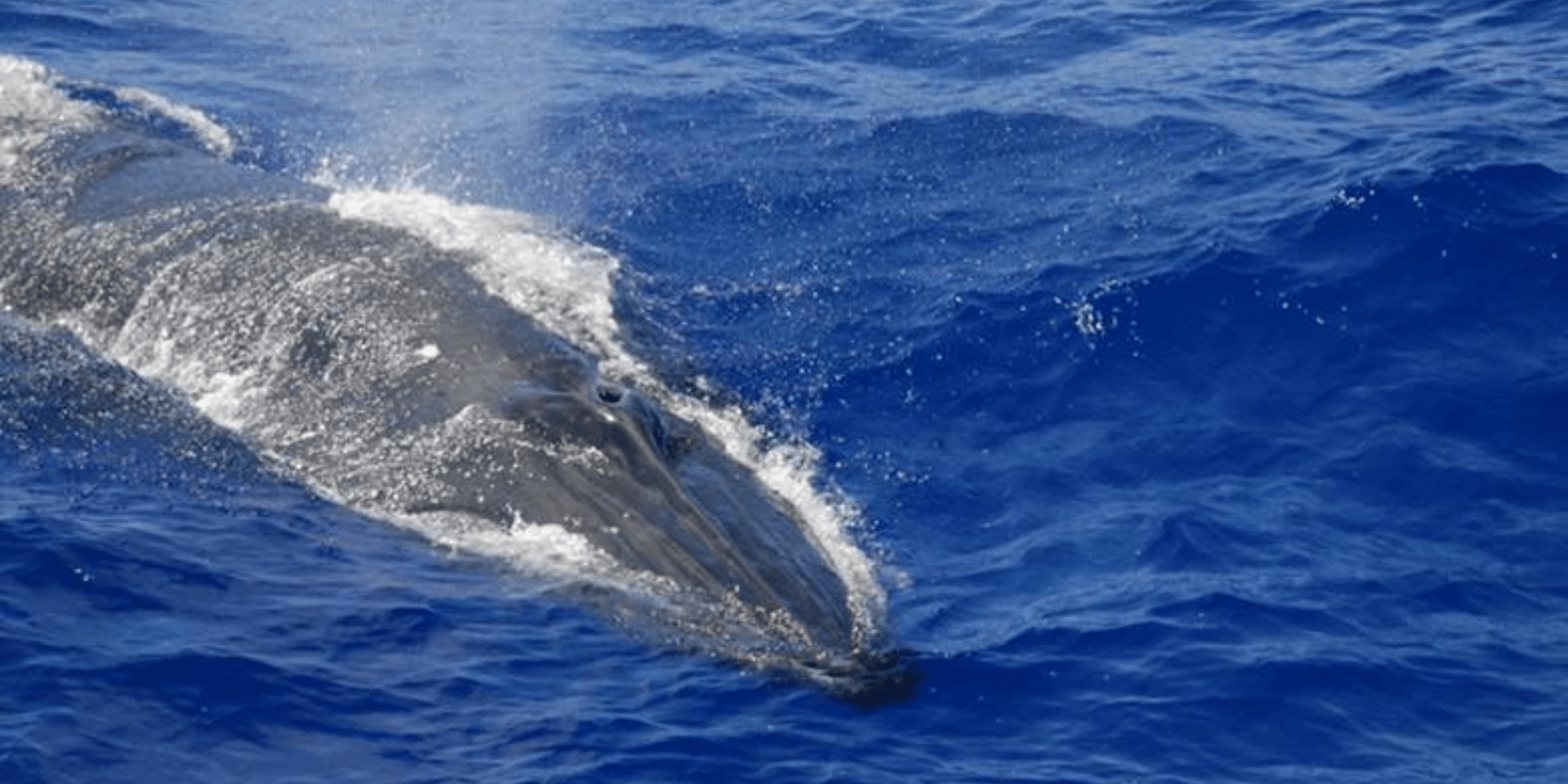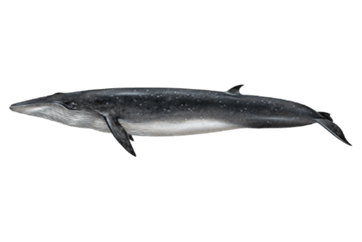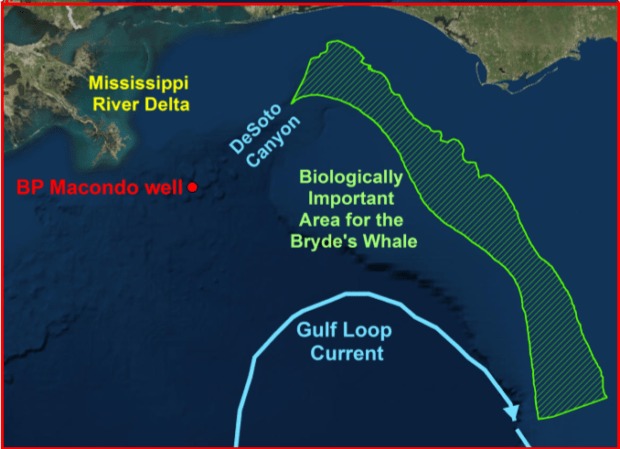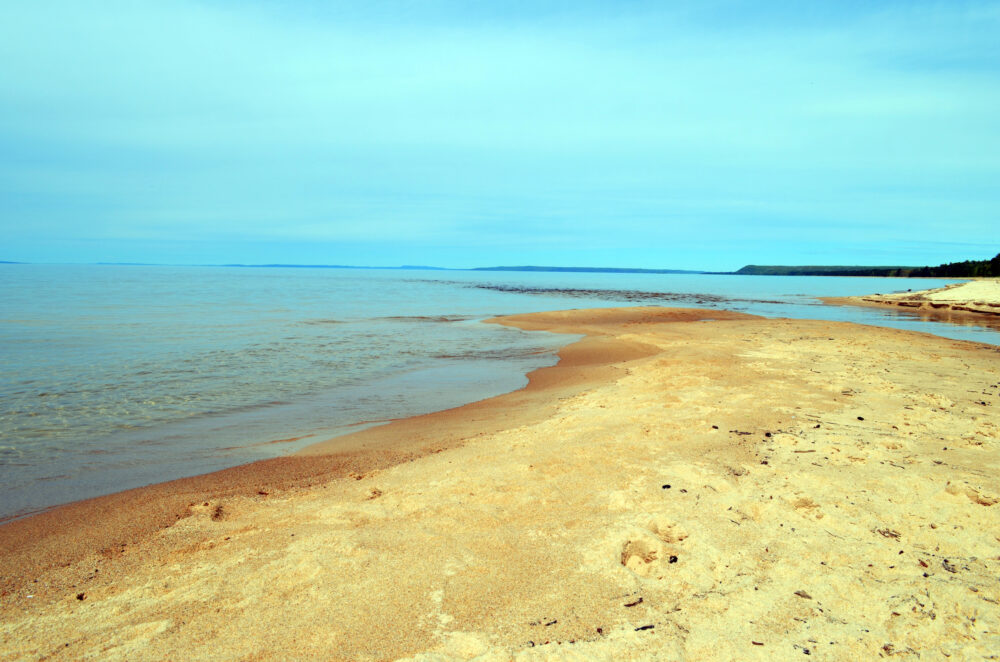We have much more to do and your continued support is needed now more than ever.
Is It Too Late For A Mysterious, Newly Discovered Whale?

For decades occasional sightings and strandings of what looked like Bryde’s whales (pronounced “broo-dess”) occurred in the Gulf. These were simply assumed to be occasional strays from the Atlantic.
What no one realized is that these Bryde’s-type whales actually live in the Gulf permanently. Further, they are genetically and physically distinct from all other Bryde’s whales in the world. They even sound different. The closest relatives of the Gulf of Mexico Bryde’s whales turn out to live in the Indian Ocean.

Just Discovered, But Few Remain
Unfortunately, there may be fewer than fifty of these unique whales left. In April the National Oceanographic and Atmospheric Administration (NOAA) added the Gulf of Mexico Bryde’s whale to the Endangered Species List.
NOAA estimates that there could be at most 250 individuals, and it is far more likely that fewer than 100 exist, with less than 50 old enough to reproduce.
Threats abound: entanglement in fishing gear, ship strikes, and underwater noise disrupting communication. Given the huge amount of petroleum production in the Gulf, another major oil spill, combined with perilously small population size, looms as a major threat. While a drilling moratorium remains off the Florida Gulf coast, the Gulf’s currents make that area vulnerable. Scientists estimate that nearly half of the Gulf’s Bryde’s whales were exposed to oil from the Deepwater Horizon and that nearly a quarter died as a result.
The Only All-American Whale
The Gulf of Mexico Bryde’s whale is the only whale with a currently known home range confined to U.S. continental waters. These whales live far offshore of the Florida Panhandle, where the bottom is cleft by the deep Desoto Canyon. The Gulf’s Loop Current, mixing warm Caribbean water with the cooler, fresher plume from the Mississippi River, sweeps up the canyon against the broad continental shelf, creating habitat for small schooling fish. The whales may feed on these schools near the bottom, between about 650 and 1,000 feet deep, but little is known for certain about their life history.

Were Bryde’s Whales Once More Widespread in the Gulf?
Historical whaling logbooks from the Gulf of Mexico contain multiple records of baleen whales being taken from the Gulf. Baleen whales are a type of whale that filters water through flexible, expandable plates (baleen). Given that Bryde’s Whales are the only baleen whales known to reside in the Gulf, these whaling records suggest–but do not prove–that Bryde’s whales might once have had a broader distribution, particularly south and west of the Mississippi River Delta.
A Whale, Under Our Noses All Along
Recently, headlines about the Global Assessment Report on Biodiversity and Ecosystem Services told us that as many as one million species may be at risk of extinction in the coming few decades. One striking assertion in the report is that there are an estimated seven million undescribed species—an astonishing figure.
The example of the Bryde’s whale in the Gulf of Mexico illustrates how little we know about wildlife on our planet—and how much is at stake. If we can miss the existence of a large whale in the heavily trafficked waters between New Orleans and Tampa, just think how many ferns, grasses, fish, worms, beetles, moths and crustaceans must remain undetected.
TAKE ACTION: Add your name to stand with coastal state governors in saying no to more offshore drilling and yes to safeguarding coastal wildlife:
Take Action!
It is a sad truth that we may just have discovered this new American whale on the eve of its disappearance. But given our current state of knowledge, we can hold out at least a slim hope that other undetected populations exist elsewhere in the Gulf or even in the Caribbean.





















